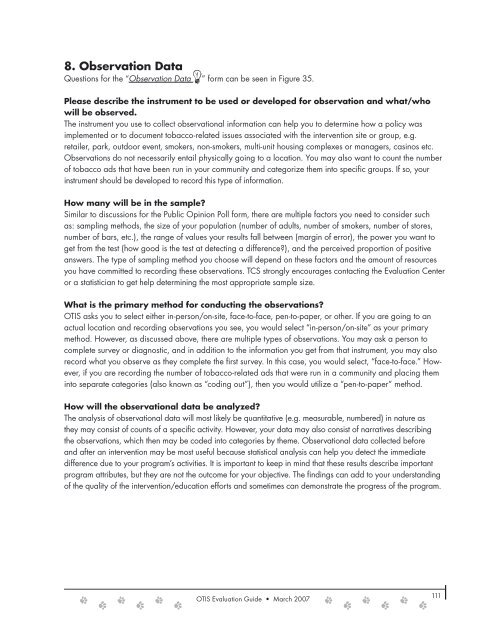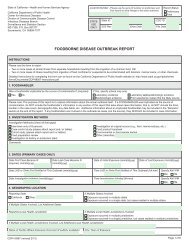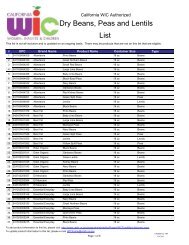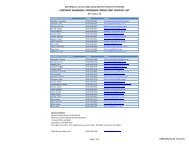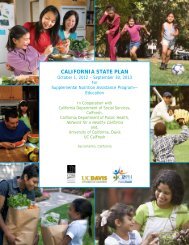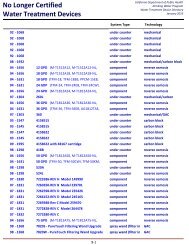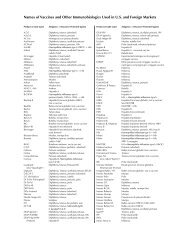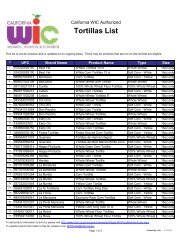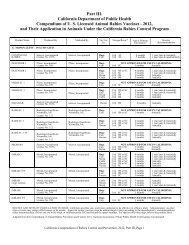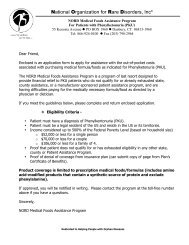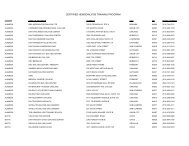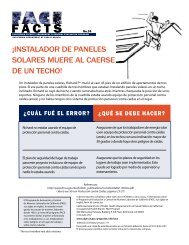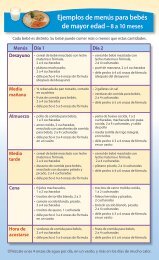OTIS Evaluation Guide (PDF) - California Department of Public Health
OTIS Evaluation Guide (PDF) - California Department of Public Health
OTIS Evaluation Guide (PDF) - California Department of Public Health
You also want an ePaper? Increase the reach of your titles
YUMPU automatically turns print PDFs into web optimized ePapers that Google loves.
8. Observation Data<br />
Questions for the “Observation Data ” form can be seen in Figure 35.<br />
Please describe the instrument to be used or developed for observation and what/who<br />
will be observed.<br />
The instrument you use to collect observational information can help you to determine how a policy was<br />
implemented or to document tobacco-related issues associated with the intervention site or group, e.g.<br />
retailer, park, outdoor event, smokers, non-smokers, multi-unit housing complexes or managers, casinos etc.<br />
Observations do not necessarily entail physically going to a location. You may also want to count the number<br />
<strong>of</strong> tobacco ads that have been run in your community and categorize them into specific groups. If so, your<br />
instrument should be developed to record this type <strong>of</strong> information.<br />
How many will be in the sample?<br />
Similar to discussions for the <strong>Public</strong> Opinion Poll form, there are multiple factors you need to consider such<br />
as: sampling methods, the size <strong>of</strong> your population (number <strong>of</strong> adults, number <strong>of</strong> smokers, number <strong>of</strong> stores,<br />
number <strong>of</strong> bars, etc.), the range <strong>of</strong> values your results fall between (margin <strong>of</strong> error), the power you want to<br />
get from the test (how good is the test at detecting a difference?), and the perceived proportion <strong>of</strong> positive<br />
answers. The type <strong>of</strong> sampling method you choose will depend on these factors and the amount <strong>of</strong> resources<br />
you have committed to recording these observations. TCS strongly encourages contacting the <strong>Evaluation</strong> Center<br />
or a statistician to get help determining the most appropriate sample size.<br />
What is the primary method for conducting the observations?<br />
<strong>OTIS</strong> asks you to select either in-person/on-site, face-to-face, pen-to-paper, or other. If you are going to an<br />
actual location and recording observations you see, you would select “in-person/on-site” as your primary<br />
method. However, as discussed above, there are multiple types <strong>of</strong> observations. You may ask a person to<br />
complete survey or diagnostic, and in addition to the information you get from that instrument, you may also<br />
record what you observe as they complete the first survey. In this case, you would select, “face-to-face.” However,<br />
if you are recording the number <strong>of</strong> tobacco-related ads that were run in a community and placing them<br />
into separate categories (also known as “coding out”), then you would utilize a “pen-to-paper” method.<br />
How will the observational data be analyzed?<br />
The analysis <strong>of</strong> observational data will most likely be quantitative (e.g. measurable, numbered) in nature as<br />
they may consist <strong>of</strong> counts <strong>of</strong> a specific activity. However, your data may also consist <strong>of</strong> narratives describing<br />
the observations, which then may be coded into categories by theme. Observational data collected before<br />
and after an intervention may be most useful because statistical analysis can help you detect the immediate<br />
difference due to your program’s activities. It is important to keep in mind that these results describe important<br />
program attributes, but they are not the outcome for your objective. The findings can add to your understanding<br />
<strong>of</strong> the quality <strong>of</strong> the intervention/education efforts and sometimes can demonstrate the progress <strong>of</strong> the program.<br />
<strong>OTIS</strong> <strong>Evaluation</strong> <strong>Guide</strong> • March 2007<br />
111


